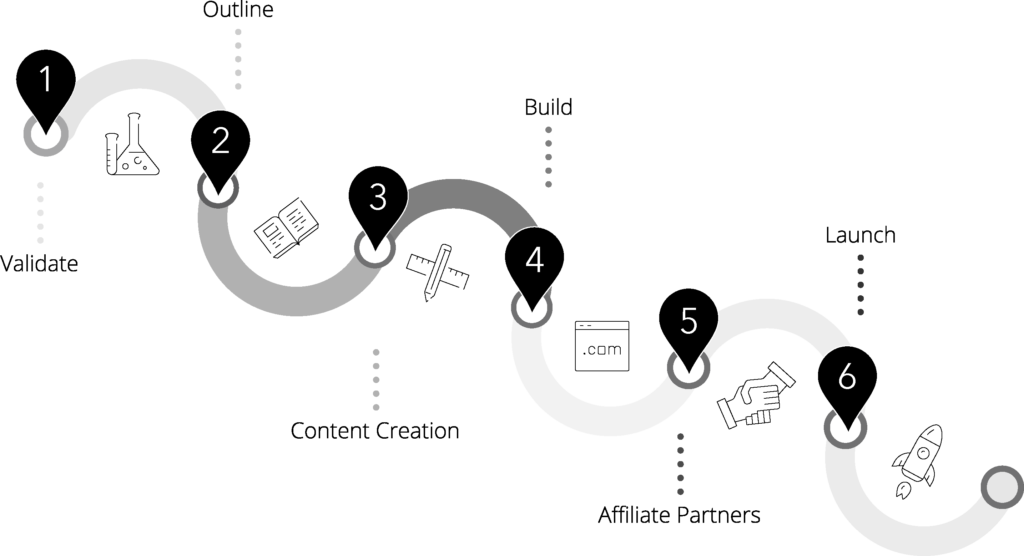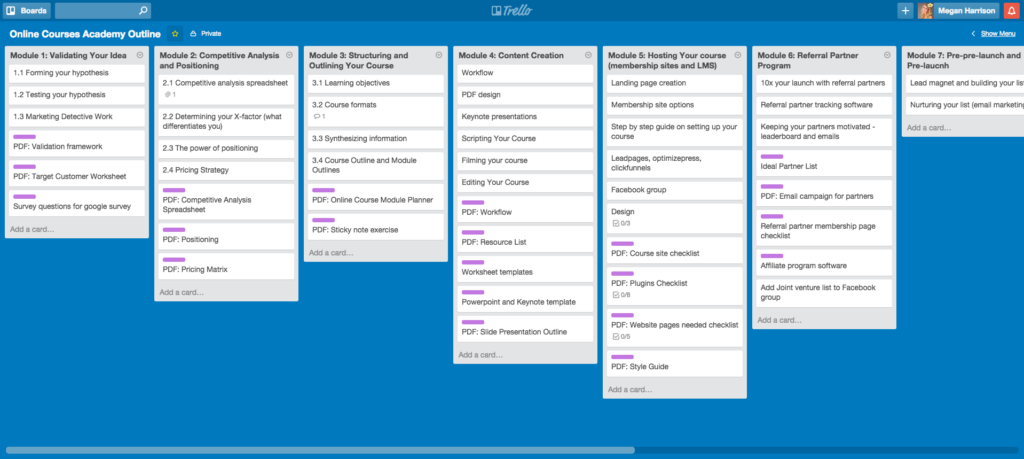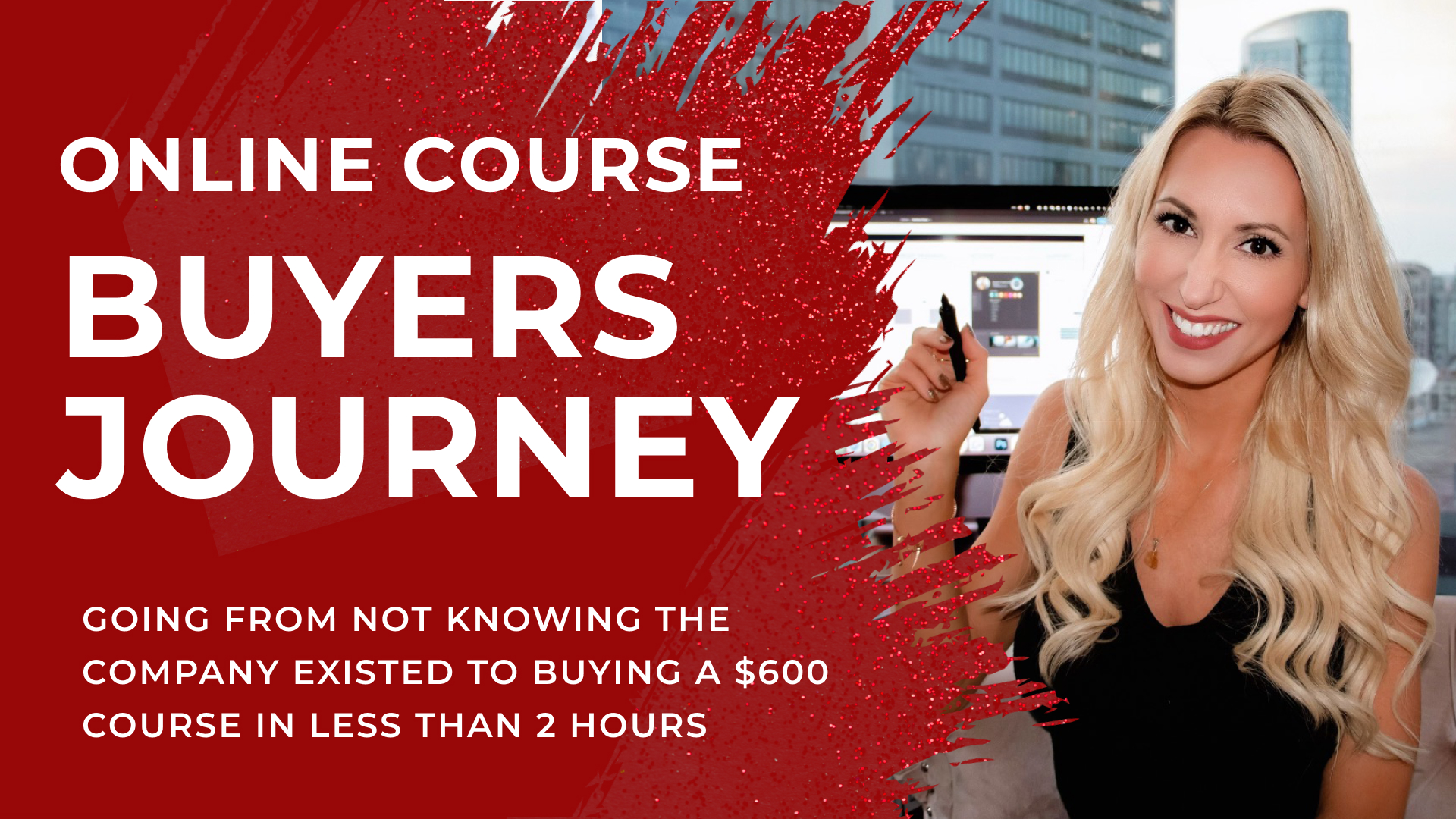When you package your expertise in a way that isn’t dependent upon where you live or how many hours you work a whole new world of possibility opens up. Suddenly, the time and geographic barriers that once restricted your growth become nonexistent and your earning potential becomes unlimited.
This is why I’m so passionate about online courses. They’ve created an unprecedented opportunity to obtain financial freedom doing what you love and helping others change their lives for the better.
Instead of taking on projects or clients just to pay the bills or feeling like you’re running on a never-ending hamster wheel, you have the freedom to only work with who you want, when you want, doing what you want.
And this changes EVERYTHING.
Today I want to share the exact process we’ve used to create online courses for our clients that have generated over $65 million in revenue this past year. I’ll also share a few examples of clients who have completely revolutionized their business by productizing their expertise, in hopes that it inspires you to do the same!
So let’s dive in…
How to create an online course
Step 1: Validate your idea
Before you put the time and energy into creating a course it’s extremely important to validate that there is market demand. You want to ensure that people are willing to pay for the solution you are offering.
Here are a few ways to validate your online course idea…
Conduct a competitive analysis

A competitive analysis is a broad term for the practice of researching, analyzing, and comparing competitors in a specific market. A thorough competitive analysis will allow you to accomplish three things.
1. It will allow you to determine if there is a demand for your online course.
A lot of times people are intimidated by competition but it’s actually a good thing. If there are people successfully selling courses on your topic it means there’s a need for your course and people are willing to pay for the solution.
On the flip side, if there’s no competition that could be a red flag that it’s a poor market. It’s not impossible, but it’s highly unlikely that you’re going to be the first person in the existence of the world to come up with this course idea.
2. You’ll gain insights into what IS working so you can model after others’ successes.
3. By analyzing your competition you’ll be able to identify a point of differentiation that sets you apart.
You can use these insights to develop a unique value proposition.
For example, I sell an online course that teaches you how to create an online course step by step called Online Courses Academy. And although there are a lot of other courses on this topic I was able to identify key points of differentiation that set my course apart and provide much higher value to the right target customer.
After researching my competition I found the following:
- Pretty much every other course available barely covers the technology part on how to build the membership site for your online course.
- No one else taught about the design and style of your course.
- Other courses on my topic were being sold by people who were successful with creating their own online courses but they didn’t create courses for other people every day as my agency does.
I was able to use these insights to strengthen my offer by including the following…
- Step by step training on how to build your membership site on WordPress using LearnDash learning management system and Memberium or Memberpress membership plugin.
- Include training on design and creating a course style guide
- Include beautiful, professionally designed page templates that can be uploaded in a few clicks.
- Leverage the authority and credibility of my company and our client’s successes in my marketing.
To conduct a competitive analysis you need to answer the following questions:
- Who are my competitors?
- What courses and training do they offer?
- How much do they charge for their courses?
- What is their lead generation and sales strategy?
Interview your target customers
There is no better way to get answers than talking directly to people who match your ideal customers.
Here are a few questions to ask potential customers:
- What is your biggest struggle with [insert topic]?
- What other solutions have you tried?
- How much would it be worth if you could solve this problem?
Create a beta version of your course
One of my favorite ways to validate your online course idea is by creating and selling a beta version of your course.
Instead of waiting for your course to be completed in its entirety, present an offer to your audience to join a 6-week group coaching program on the topic at a discounted price. Create a private Facebook group for your members and then deliver the content once a week on Zoom.
Step 2: Outline your online course
Your course outline is the foundation of the entire course creation process.
Organize your content in a clear and actionable format by chunking it into manageable pieces. The format is very similar to how a book has sections and chapters within each section. A course has modules (like the sections of a book) and lessons (like chapters) within that module.
I recommend beginning with the post-it-note outlining process and then creating a more formalized version in Trello or Airtable.
Step 3: Create your course content
After you have your course outline 100% complete you are ready to begin creating the actual content.
I’ve included a few screenshots from our client’s courses below. Even though the designs look very different you’ll notice that the structure of the content is exactly the same.
Each lesson includes the following content:
- Video
- Short summary
- Worksheets
- Additional resources such as audio file, transcript, and/or checklists.
This is the same content you’ll want to create for each of your lessons.

This is the workflow I recommend for creating your course content:
- Create your worksheets/activities.
- Script your video lessons
- Create slides for your video lessons.
- Record your video lessons
- Edit your videos
Step 4: Build your online course membership site
Your membership site will be the central hub for your online course. This is where customers will be able to access all the content you created in phase one.
Step 5: Market and sell your online course
Build an affiliate partner program
One of the most effective ways to increase your reach is by partnering with other people/businesses that are already serving your target market and have them promote your product to their audience.
Launch Strategy
The purpose of a launch is to help your audience form the beliefs necessary to become a customer and overcome objections that may prevent them from purchasing. In addition, your launch builds anticipation and excitement for your program.
Online Course Examples
Here are a few examples of clients who have taken their businesses to a whole new level by adding an online course to their product suite.
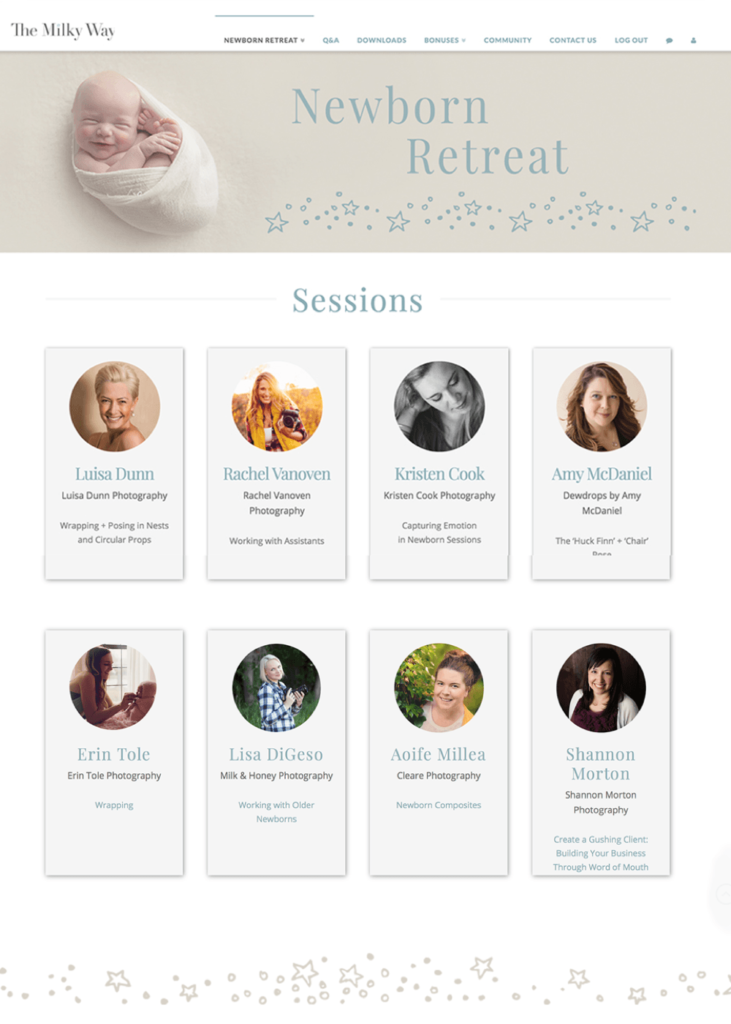
INDUSTRY: Photography
ONLINE COURSE: The Milky Way Online Retreats & Courses
Erin and Lisa are extraordinary examples of what’s possible when you step past the boundaries of a service-based business.
Instead of limiting their revenue stream to one-on-one clients, they created online courses and retreats on various topics such as newborn, maternity, and family photography.
The Milky Way filled a void in the photography industry by building a safe and supportive community that inspired photographers to improve their skills and confidence. They’ve become a market leader and the business is generating multiple millions per year.

INDUSTRY: Relationship Therapist
ONLINE COURSE: Relationship Skills Bootcamp
Steph and Darcy are licensed therapists in New York City. Their practice, Alternatives Counseling, was formed in 1998 and specializes in individuals and couples who want more out of their relationships.
After reaching a cap on how many patients they could serve, they decided to scale their business by creating a program that teaches the skills necessary to find and keep lasting love.
In addition to bringing in an entirely new revenue stream with unlimited earning potential, their course has also drastically increased the demand for their one-on-one services.
Her online courses consist of programs for patients as well as health professionals that serve as continuing education credits.
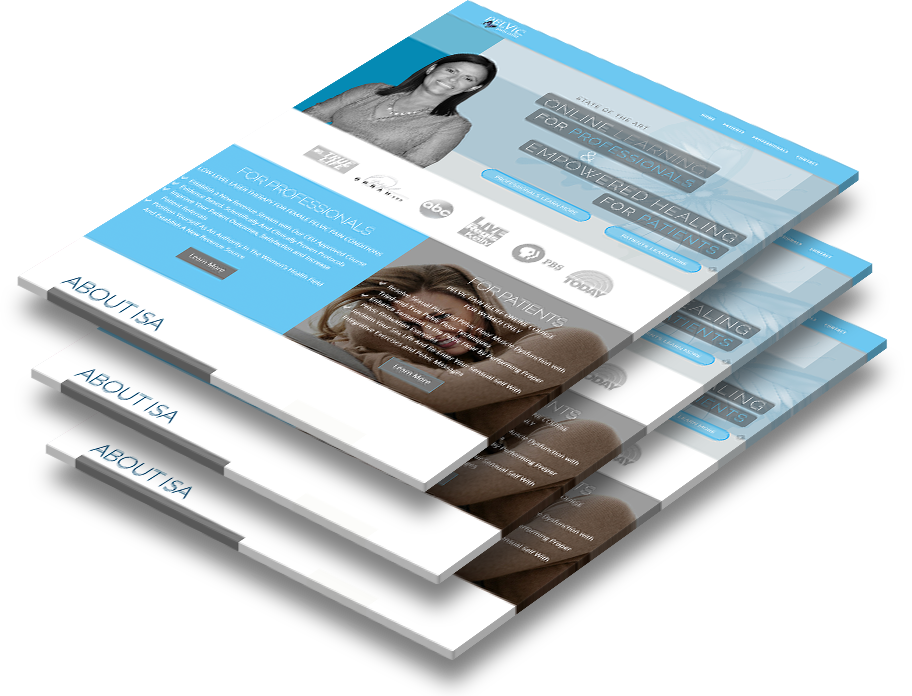
INDUSTRY: Physical Therapy
ONLINE COURSE: Pelvic Pain Alchemy
Isa Herrera is a licensed physical therapist, as well as an expert in integrative pelvic floor therapies in the field of women’s health.
Since 2005 she’s helped over ten thousand women treat pelvic paid at her NYC-based healing center Renew Physical Therapy.
After learning about the new opportunity that online courses created she’s been on a mission to get the word out globally to all kinds of professionals who treat pelvic floor and patients who have the “I Can Do It” mindset.
Her online courses consist of programs for patients as well as health professionals that serve as continuing education credits.
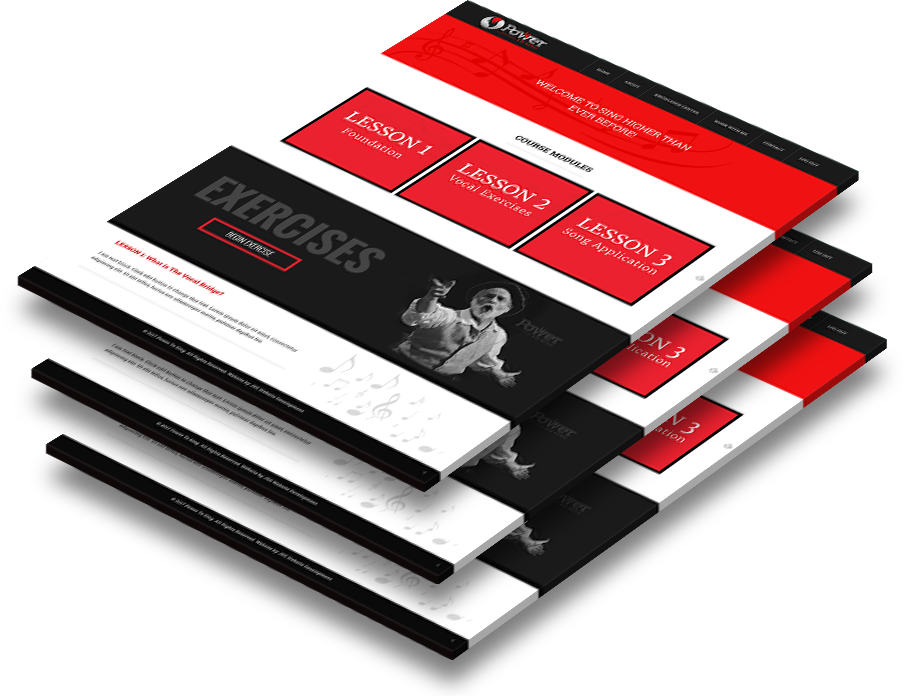
INDUSTRY: Singing Coach
ONLINE COURSE: Sing Higher Than Ever Before
Before Chuck’s passion for singing is contagious. While he loves working with his private students, he wanted to share his love for singing with more people across the world.
Chuck began to build a YouTube following by producing high quality free content and then launched his paid online courses.

INDUSTRY: Digital Agency
ONLINE COURSE: Online Courses Academy
I’d be quite the hypocrite if I didn’t take my own advice 🙂 Online Courses Academy is a complete implementation program for entrepreneurs who want to productize their expertise by creating their own online course.
The program guides the user through each core component of course creation from validating your idea, creating your outline, creating your content, building your membership, building your affiliate program, and establishing your launch strategy.
Online Course Academy puts the course creation process in turbo-drive and saves you from expensive and exhausting trial and error.
Now it’s time to take action!
Now you’re armed and equipped to take the first step towards turning your knowledge, skills, and experience into a scalable, recurring revenue stream. For a more in depth walkthrough of the course creation process check out this blog article on The Result Centered Training Formula which will teach you the exact steps I use to structure courses for maximum effectiveness.Three phases of course creation
The course creation process is broken down into three main phases and each phase consists of a few processes.
Why do people pay premium prices for online courses?
Paying for education is not a new concept. People have been paying for knowledge since the beginning of time. The difference is that now learners are no longer limited to the traditional education system.
Instead, they can learn directly from the source, from people who have already achieved the result they want to achieve. Therefore, if you’re able to teach someone a system, framework or process that will expedite the process of getting from where they are to where they want to be, adding an online course to your product suite is an excellent idea.
The first step to making this a reality is understanding the three phases of the course creation process so you can implement just-in-time-learning and focus on the most important next steps instead of getting stuck in analysis paralysis.
Phase 1: Content Creation
The first phase focuses on ensuring there is a market for your course, organizing and synthesizing your expertise, and actually creating the content for your course. This usually entails video lessons, slide presentations, and worksheets or activities.
***You are in this phase if you are have not yet finished outlining your course or if you are in the process of creating your content.
Phase 2: Design and Technology
After your content is created you’re ready to begin setting up the infrastructure. This entails building your membership site and setting up the other necessary systems like your payment processor and email provider.
***You are in this phase if your content is already created and your ready to build your membership site.
Phase 3: Marketing and Launch Strategy
Now that your course is complete, it’s time to let the world know the doors are open. One of the fastest ways to gain traction and increase sales is by creating an affiliate partner program. You’ll also want to implement a launch strategy to build anticipation and excitement for your program.
***You are in this phase if your membership site is near completion or if you have hired a company to design/develop your course for you. Therefore, you have the time and energy to focus on planning your launch.


